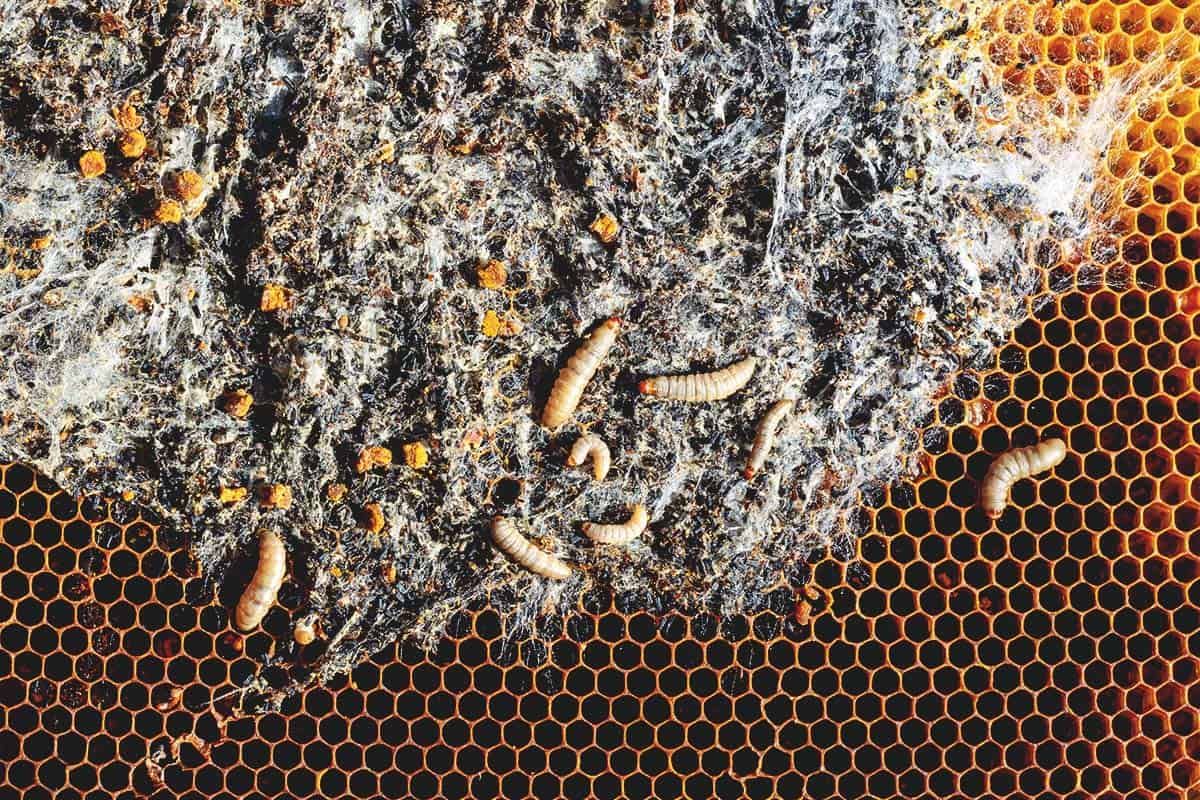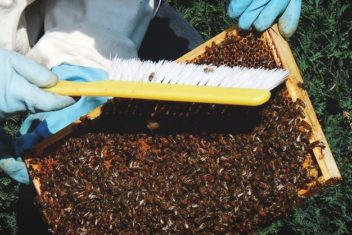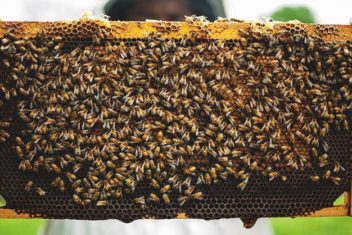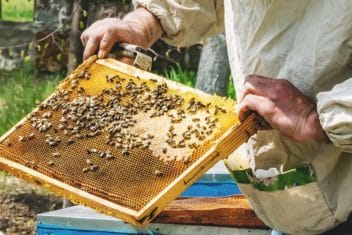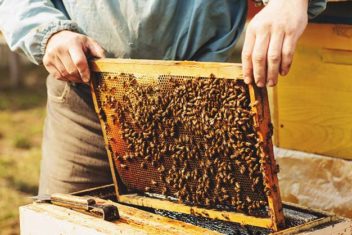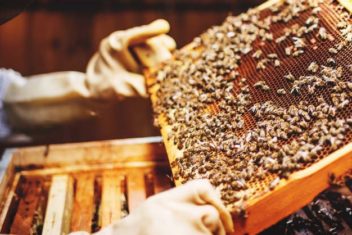Do you have a beehive or two in your apiary? If you do, then you know that keeping bees is hard work and there are many things that can go wrong. A wax moth infestation is one of those things.
If you’re unfortunate enough to be visited by this pest, your hive could be so damaged it will be completely decimated. That’s why you want to avoid an infestation at all costs.
But what do you do if it’s too late and you have wax moths? We’re here to help.
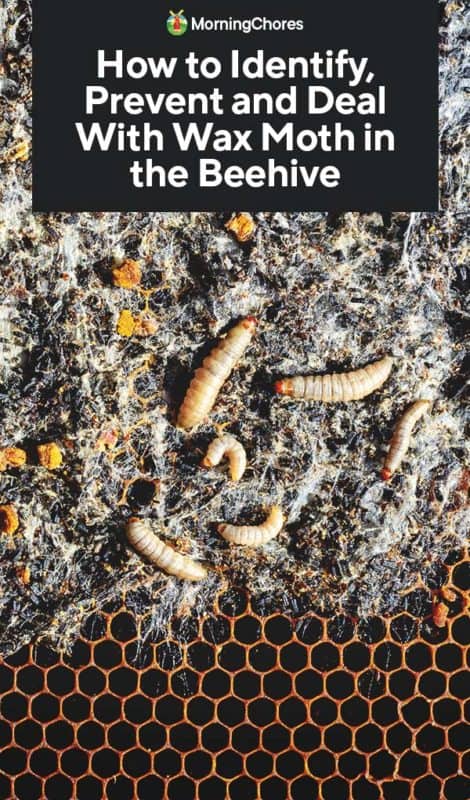
What is a Wax Moth?
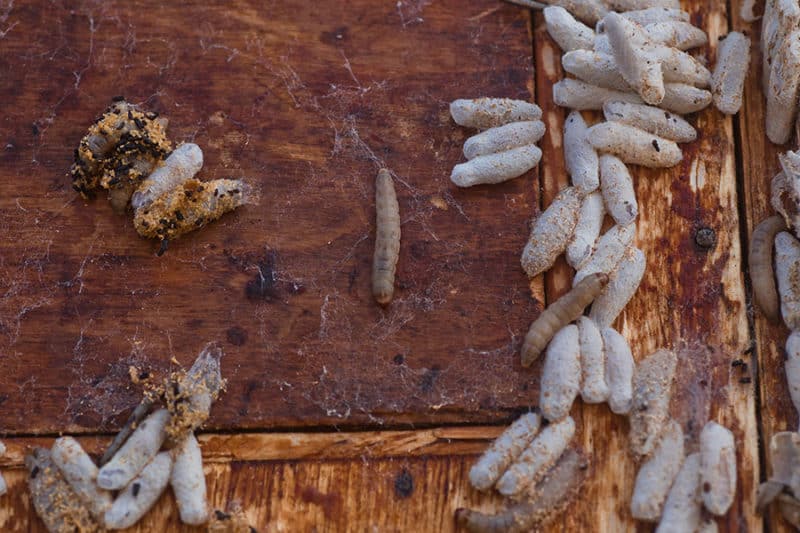
The greater wax moth (Galleria mellonella) and the lesser wax moth (Achroia grisella) are pests that lay their eggs inside a beehive. There are four stages that the insect goes through as they grow:
- Egg stage: eggs are normally laid in the cracks and gaps of hive parts. They are tiny and appear in batches of around 300 to 600 eggs.
- Larvae stage: after hatching, the larvae burrow into the wax comb and can feed for up to five months, growing exponentially.
- Cocoon: the larvae then form cocoons, which are usually found on the hive body or frame and in any crack or hole.
- Adult: the adults don’t eat inside the hive, but they do lay eggs and can be transmitters of more serious infections like foulbrood.
Damage Caused by Wax Moth
I know from experience that wax moths can wreak severe damage in some circumstances.
These pests eat beeswax, pollen, the larvae of honey bees, and the feces left behind in brood cells. They also eat the protective capping over live larvae, which can result in deformities. In other words, wax moths are voracious eaters and they can do some real damage to the entire hive.
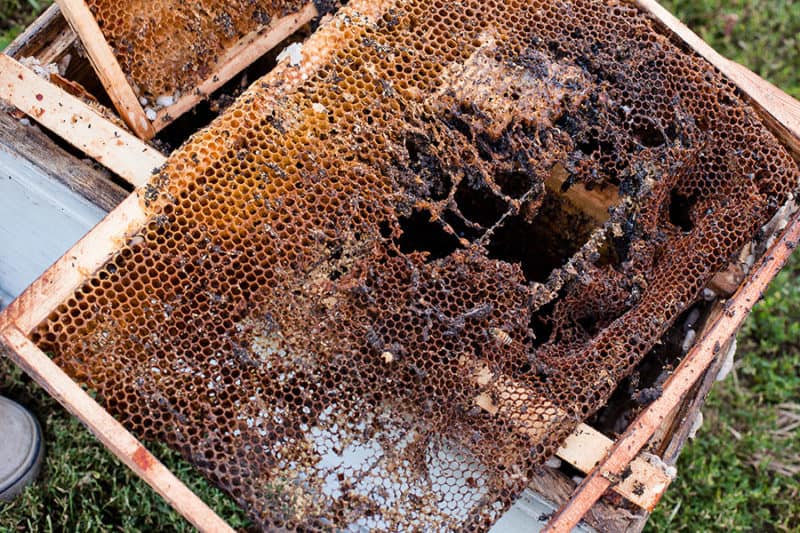
When I dealt with this pest, the number of bees in my hive had declined to extremely low levels and it was immediately clear why. The wax moth larvae had overrun the bees.
Signs of Wax Moth
Wax moths aren’t hard to identify once an infestation gets large, but initially, they can be hard to spot. The first thing I noticed when I opened my hive was webbing. The frames looked like they were covered in white cotton.
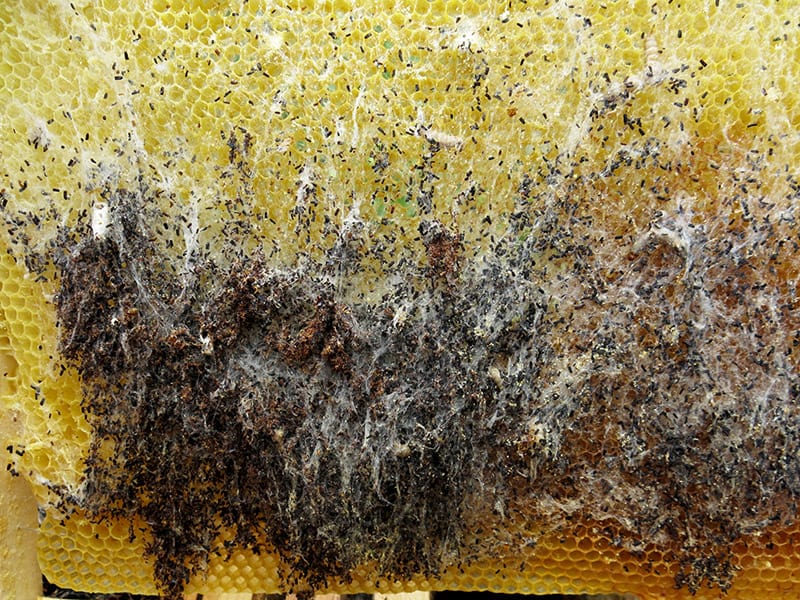
Once the larvae start eating, they work their way through the entire frame and you can clearly see the trails they leave in their wake.
To identify a wax month infestation, look for:
- Adult moths
- Uncapped or bald brood
- Webbing
- Bee decline
- Moths or eggs in places the bees can’t access
- Cocoons stuck to frames
- Tracks through brood frames
How to Avoid Wax Moth in Your Hive
The reason my hive was infected was that I didn’t notice a decline in numbers, but I still had two active frame boxes. This meant the moths were able to infiltrate because the bees weren’t high enough in numbers to protect the whole hive.
Once the moths got established, the decline was inevitable. I found all four stages of the moth throughout my hive.
The good news is you that you can learn from my mistake to avoid this problem. To prevent wax moths, here are some tips:
- Keep bee numbers at a high ratio.
- Maintain a healthy queen and replace her if necessary.
- Consider replacing your brood frames every four years.
- Repair or remove any cracked frames so that moths can’t lay eggs in those spaces.
- Clean the bottom board of the hive.
- Use a queen excluder to prevent brood in the honey super.
- Don’t add another honey super until the hive is ready.
- Check the hives regularly. Once the moth is established, your hive will be overrun swiftly if the bees can’t control the moth themselves, so be ready to intervene.
- A strong hive helps to keep wax moth at bay. Ensure your queen is healthy and is laying a large number of eggs. You want a lot of brood to ensure there are enough adult bees to keep the hive safe.
- Don’t take too long to prepare your hives for winter. I left the hive at two frame boxes at the beginning of winter but should have compressed it to one frame box sooner. While the bees were congregating in the bottom box, the wax moth likely made its way to the second frame box where there were no bees to protect the area.
Plants That Deter Wax Moth
Like many beekeepers, I prefer natural remedies over chemicals, and nothing is more natural than plants. I surrounded my hives with plants that have a reputation for deterring wax moth, and so far, I’ve never had another incident.
Here’s what I have growing near my hives to deter wax moths:
- Eucalyptus
- Camphor
- Geranium
- Bay
- Cedar
- Tansy
- Lemongrass
- Citronella
The important thing to remember when choosing plants is to pick some that won’t affect the flavor of the honey in a way you don’t want.
Home Made Trap for Wax Moth
One thing all beekeepers know is toxic chemicals are a no-no in hives. Not only will it potentially kill bees, but the chemicals may also get into your honey.
That’s why it’s helpful to know how to make an all-organic trap for wax moths.
What You’ll Need:
- An empty 1-liter soda bottle
- The peel from one banana
- 1 cup of sugar
- 1 cup vinegar
- 1 cup of hot water
Cut a hole in the plastic bottle about the size of a quarter just below the shoulder.
Mix hot water and sugar together and pour it into the bottle through the small hole. Shake the mixture a bit, then add the vinegar and banana peel.
Hang the bottle near your beehive. Your goal is to attract the adult moths to the bottle, where they’ll go inside and drown.
There are also traps you can buy to help protect your hive.
What to do When You Find Wax Moth in Your Beehive
If you’re unlucky and have a wax moth infestation, the only remedy is to clean it out and rid the hive of all moths, larvae, and mess.
This takes time, but you must be thorough and do the job right or you’ll be facing the issue again in no time.
- Using your hive tool, remove all signs of wax moth. This includes larvae, adults, eggs, feces, and webbing. Remove wax and propolis at the same time. My frames were decimated afterward, so I removed everything, bagged it up, and threw it away.
- Clean your frames extremely well. I soaked my frames in bleach and water.
- Freeze the frames for a couple of days.
- The last step I took was to blast the frames with water before drying them thoroughly and storing them.
Learn How to Best Store Comb and Frames
There are many ways beekeepers store their comb and frames, but if you want to avoid wax month, freeze them. This kills the wax moth at all stages of its life. Freeze them for about five hours before storing them.
Wax Moths Aren’t a Death Sentence
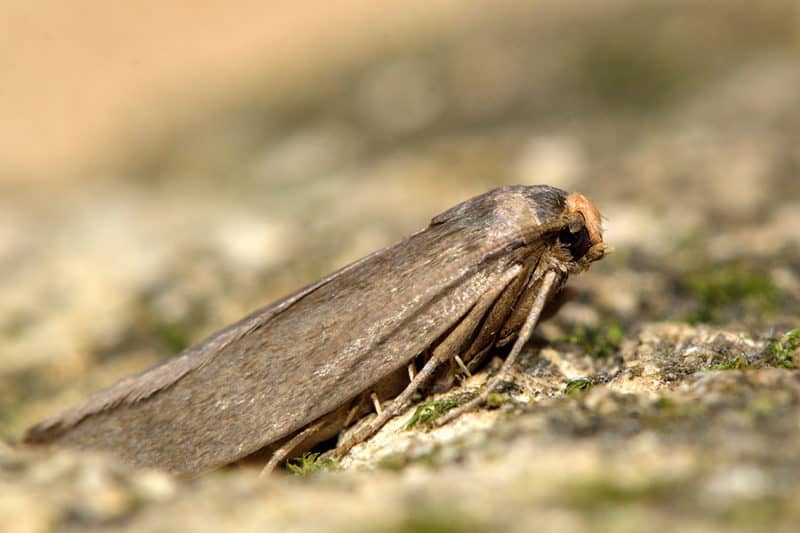
The fact is, wax moth are prevalent and make their way into a lot of hives. If the colony is strong they can take care of it themselves and you probably won’t know the moth was there.
A serious wax moth infestation is an indication there’s something else wrong with the hive, whether that’s a weak or failing queen, a decline in the number of healthy bees, or another disease is present.
The moment you see evidence of wax moth, act quickly. They can multiply quickly and decimate your hive.
